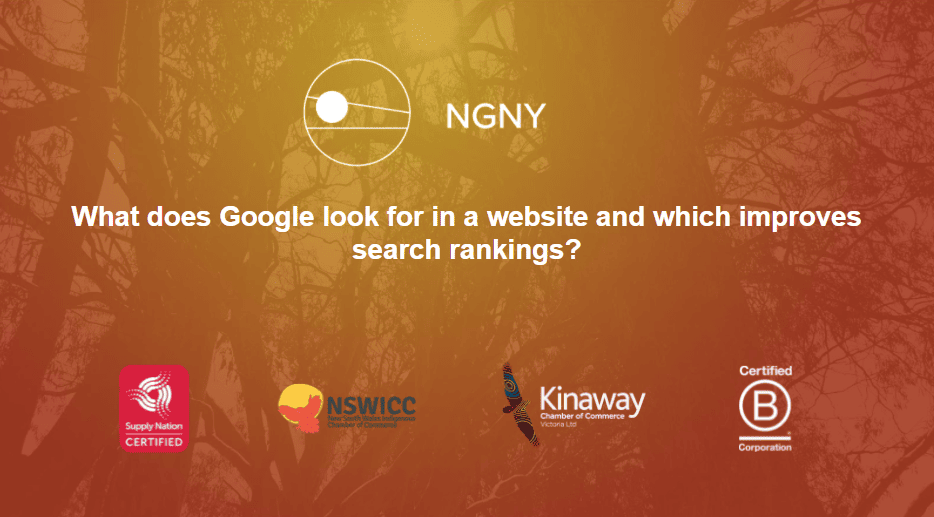
We often wonder how people find businesses online and eventually close transactions with them? The answer is simple. Generally, people try to utilise search engines like Google or Bing and type in the search bar practically anything they need to have answers on. There is no end-all-be-all formula to achieve SEO success however we are not helpless in this aspect. Good practices to build SEO is about aligning your website with Google’s various ranking factors. After all, search engine optimization (SEO) is the process of optimising your website to rank as high as possible in organic search engine results. Our ultimate goal here is to generate as many organic searches as opposed to pay-per-click advertising (or PPC), which is a strategy that focuses on paid traffic generation.
While Google did not disclose all ranking factors for websites to take note, one thing is for certain. Both paid and organic rankings on Google are determined by algorithms that take into account various characteristics and metrics considered by Google to be important. We also know that while ranking factors and algorithms may shift, the characteristics Google is trying to parse out through them are quality, trustworthiness, and performance. In this article, we will be sharing to you the main considerations used by Google in positioning websites in their search engines and perhaps you can incorporate these in your SEO strategies.
- Efficient and reliable link-building. Links are critical for your website as this is considered by Google as a crucial determinant for ranking high in search engines. It is important to consider attracting links from reputable and trustworthy sites. Focus on creating relevant links within the text. Instead of having “click here” links, try writing out the name of the destination. Always use descriptive links by linking keywords—it not only improves search engine optimization, but also adds value to your readers, including those with disabilities or who are using screen readers.
- Internal linking. SEO can’t work without a properly structured and smoothly functioning website. The term “internal links” refers to any hyperlink that points to an internal page within your website. The crawlers use internal links as a signal that helps them to analyse and properly index this information.The more organised and tightly-knit your internal linking structure is, the easier it is for search engines (and users) to find what they’re looking for. One popular method for keeping your internal links organised is by creating topic clusters. The idea is simple: you create content around a specific umbrella “pillar” topic and keep your interlinking within this cluster. This strategy works because it keeps all of your links tightly-organised around the same topic.
- Regularly updated and SEO-friendly content– Content is the heart of SEO especially in improving the rank in search engines. Search engines feel strongly about content. Regularly updated content is viewed as one of the best indicators of a site’s relevancy, so be sure to keep it fresh. Audit your content on a set schedule and make updates as needed.Don’t compromise the quality of your content because you want it to rank higher. As we stated above, quality is a priority for Google, so focus on producing content that’s compelling and easy for your audience to understand.
- Usability on mobile. Google uses mobile-first indexing when crawling websites. This means that the search engine predominantly uses the mobile version of a website when it’s evaluating a page. Even if the desktop version of your site is flawless, your search engine ranking could take a huge hit if the site isn’t optimised for mobile. Always preview your web pages to ensure that they’re easily accessible across different types of devices, not just desktop.
- Utilise keyword targeting- According to a survey by Directive, 78% of marketers identified keyword research as a high-impact practice for driving new traffic. The research process allows you to better understand what your audience is searching for and create content that directly addresses these search queries.Before you build out content for a page or write an article, identify 4-5 related keywords that you want to target. Incorporate these keywords whenever they fit naturally into the text, and insert them into other on-page elements, which we’ll cover next.
- Place title and header tags. Insert them into specific places on your page, like the title and header tags. Search engines use these tags to learn what the page is about and index it appropriately. The title tag is what’s displayed the most prominently in the search results pages.
- Meta description- it refers to the short description that lives in the HTML code of your web page. Although it doesn’t appear on the page itself, it’s displayed in search results. In the image below, you can see the meta description that appears in light grey text. Although the meta description is not a major ranking factor, Google will sometimes use it to pull a featured results snippet. Plus, it gives searchers more information about the page, which can increase click rate. For this reason, it’s still important to include the meta description as part of your SEO checklist and make sure it accurately summarises the content on the page.
8. Image alt-text-Always describe your visual and video media using alt tags, or alternative text descriptions. They allow search engines to locate your page, which is crucial—especially for those who use text-only browsers or screen readers.




